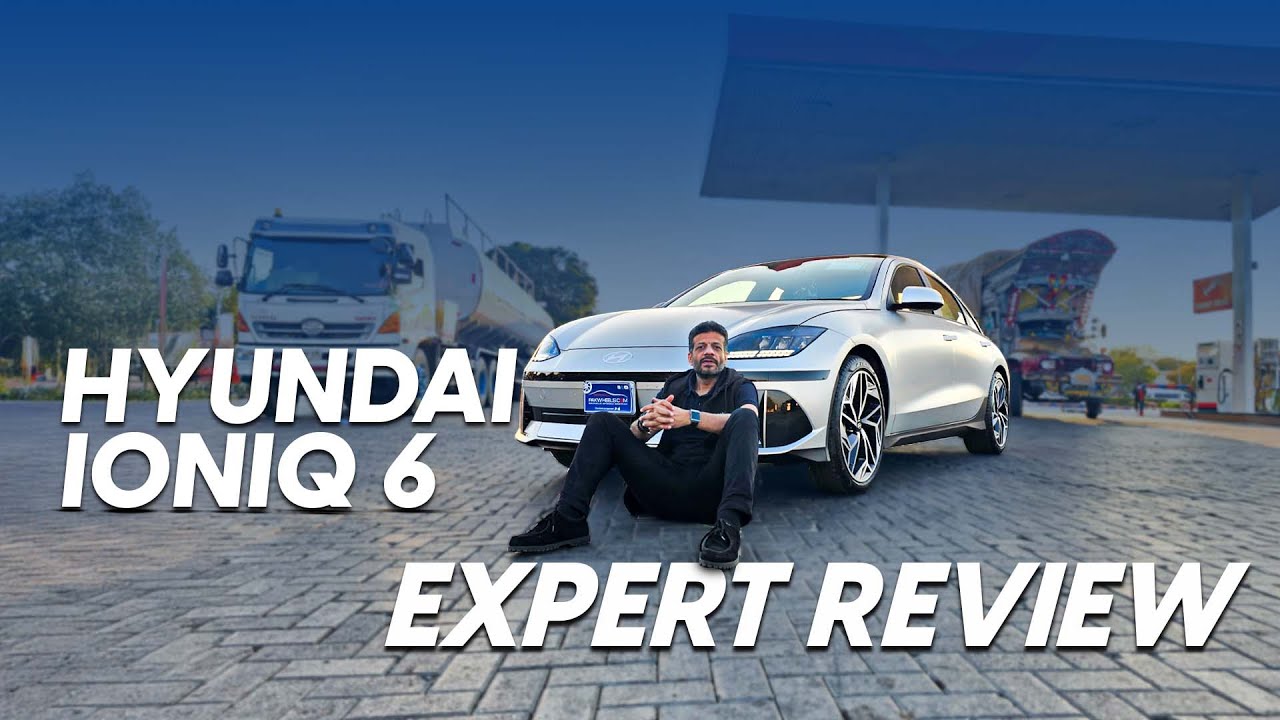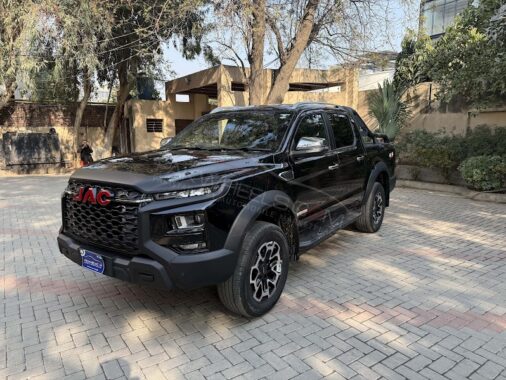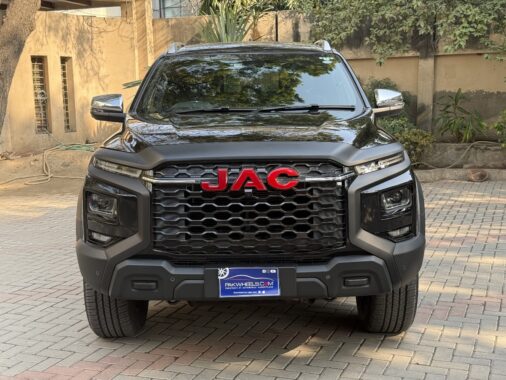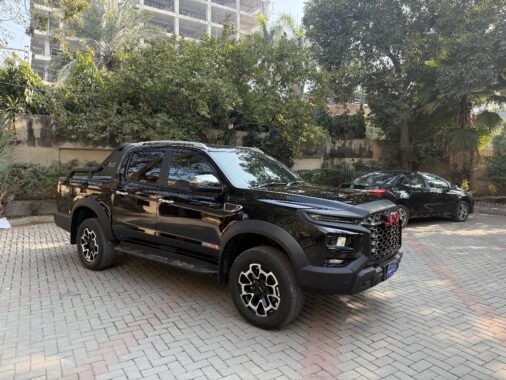Electric vehicles are redefining the automotive industry, and the Hyundai Ioniq 6 is making waves as a sleek, feature-packed option in Pakistan. With a claimed range exceeding 500 kilometers per charge, it offers a smooth ride and modern design. Let’s explore its performance, features, and practicality based on extensive real-world testing.
Highway Efficiency
The Hyundai Ioniq 6 performs reliably on highways but requires careful planning for long-distance drives.
Key Highlights:
- Consumption on highways: 18–20 kWh per 100 kilometers.
- Tested on Lahore-Islamabad route: Covered 376 kilometers with 100 kilometers of range left.
- Performance slightly decreases on inclines, i.e., Salt Range.
Pro Tip:
- Do a quick recharge during your journey to ensure a stress-free journey, especially for family trips.
City Performance
The Hyundai Ioniq 6 excels in city driving, offering a smooth and eco-friendly experience.
Performance Highlights:
- Energy consumption: 15.1–16 kWh per 100 kilometers in city traffic.
- Regenerative braking: Three adjustable levels help recover energy during stop-and-go traffic.
- Initial torque: Ensures quick acceleration, making it easy to navigate through congested areas.
Comfort Factor:
- Superior cabin insulation compared to Chinese EVs, though not as refined as German cars.
- Smooth suspension, even with 20-inch alloy wheels, ensures a comfortable ride.
Charging Time
Hyundai Ioniq 6 provides flexible charging options to suit different needs.
Charging Options:
- Standard 3 kWh charger: It takes approximately 24 hours for a full charge.
- Industrial DC fast charger: Charges from 0% to 80% in just 20 minutes.
Note:
- Charging from 80% to 100% takes longer due to battery cell balancing, which is standard for all EVs worldwide.
Battery & Range
The Hyundai Ioniq 6’s 77.4 kWh battery sets a new standard for electric cars.
Key Features:
- Company-claimed range: 519 kilometers on a full charge.
- Real-world range: Between 480–500+ kilometers, depending on driving style and conditions.
- Top-of-the-line variant: Dual-motor, all-wheel-drive setup producing 320 horsepower and 605 Nm of torque.
Comparison:
- Outperforms most Chinese and Korean EVs in range and power.
- It is slightly behind German EVs in refinement but remains an excellent choice for its price.
Interior Features
The interior of the Ioniq 6 is both futuristic and practical, but there are some areas for improvement.
Features:
- Dual 12.3-inch screens: One for infotainment and one for driver information.
- Heated and ventilated front seats with 10-way adjustability, including lumbar support.
- Tilt-and-slide sunroof for a more open feel.
- Customizable ambient lighting and a heated steering wheel.
- Rear seats provide ample legroom, though thigh support could be better for long drives.
Missing Features:
- 360-degree camera: A major drawback at this price point.
- Gear knob placement: Located on the right side, where it often clashes with the knee. Drivers may also find it confusing to determine which gear is engaged.
- Unlit buttons: The lack of backlighting on buttons makes nighttime operation difficult.
Comparison:
- It offers more comfort and features than Chinese EVs, but German EVs provide a more premium cabin experience.
Exterior Design of Hyundai Ioniq 6
The Hyundai Ioniq 6’s design turns heads with its sleek and futuristic appeal.
Key Features:
- LED parametric pixel headlamps and full LED tail lamps.
- Concealed door handles that blend seamlessly into the body.
- 20-inch diamond-cut alloy wheels with noise-reducing tires designed for EVs.
Design Inspiration:
- The rear design draws inspiration from the classic Porsche 911, adding a touch of nostalgia to its modern aesthetics.
Missing Elements:
- No radar system or ADAS features in the Pakistani variant are available in global models.
- Digital side-view mirrors with cameras are missing and have been replaced by standard heated mirrors.
Comparison:
- It is more dynamic and futuristic than most Chinese EVs. However, German competitors offer more advanced exterior tech.
Cost Efficiency
The Hyundai Ioniq 6 is one of the most cost-effective electric cars in its category.
Detailed Breakdown for 500 Kilometers:
- Battery Size: 77.4 kWh.
- Electricity Cost: PKR 75 per kWh (5,775 ÷ 77.4).
- Total Charging Cost: 77.4 × 75 = PKR 5,775.
- Cost per KM: PKR 5,775 ÷ 500 km = PKR 11.55 per km.
Comparison with Petrol Cars:
- A 660cc petrol car, averaging 20 km per liter with fuel at PKR 250 per liter, costs approximately PKR 12.5 per kilometer, making the Ioniq 6 significantly cheaper.
Additional Benefits:
- Minimal maintenance costs compared to internal combustion engine vehicles.
- Regenerative braking reduces wear on brake components, further lowering maintenance expenses.
Price
The Hyundai Ioniq 6 comes at a premium price, reflecting its cutting-edge technology and features.
Pricing Details:
- Base variant: PKR 23 million (Rs. 2.3 crore).
- ADAS-equipped variant: PKR 24 million (Rs. 2.4 crore).
Warranty:
- Vehicle warranty: 4 years or 150,000 kilometers, whichever comes first.
- Battery warranty: 4 years, ensuring peace of mind for EV buyers.
Final Verdict
The Hyundai Ioniq 6 is a remarkable choice for city driving with its exceptional range, low running costs, and futuristic features. For highway journeys, a quick recharge ensures a hassle-free experience. While it lacks some advanced features found in global models, its competitive pricing and eco-friendliness make it a strong contender in Pakistan’s EV market.
What are your thoughts on the Ioniq 6? Is it worth the investment? Share your views in the comments below!






